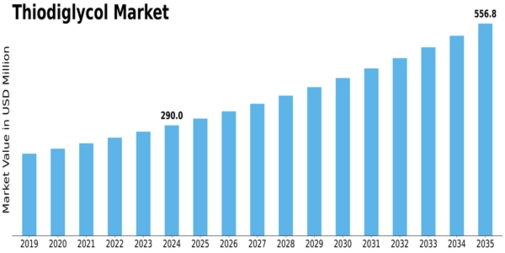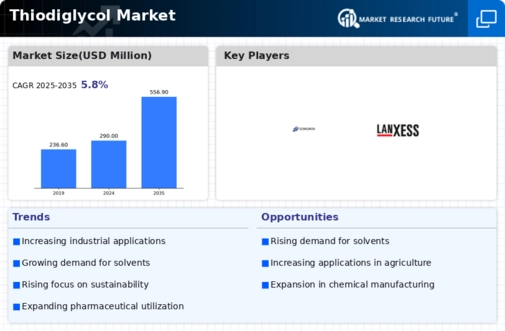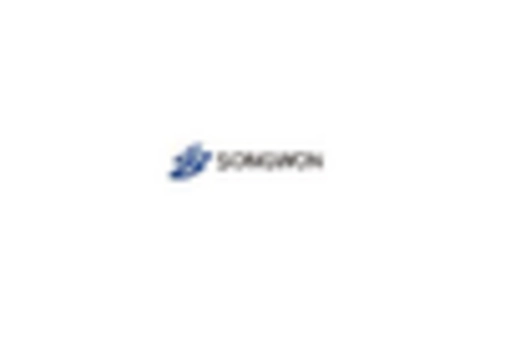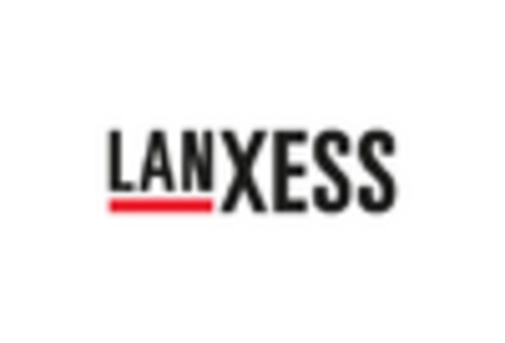Thiodiglycol Size
Thiodiglycol Market Growth Projections and Opportunities
The Thiodiglycol market is influenced by a multitude of factors, spanning from global economic conditions to specific industry dynamics. One crucial market factor is demand from end-use industries. Thiodiglycol, a key chemical compound, finds applications in various sectors such as the production of chemical intermediates, paints and coatings, textiles, and cosmetics. Fluctuations in demand from these sectors significantly impact the Thiodiglycol market.
Additionally, regulatory policies play a pivotal role in shaping market dynamics. Environmental regulations, safety standards, and compliance requirements imposed by governing bodies directly affect the production, distribution, and usage of Thiodiglycol. Changes in regulations can impact the cost structure and market accessibility for manufacturers, thereby influencing market trends.
Moreover, the availability and cost of raw materials are critical market factors. Thiodiglycol is primarily derived from ethylene oxide and hydrogen sulfide. Any disruptions or fluctuations in the supply of these raw materials can directly impact Thiodiglycol production and pricing. Furthermore, the cost of raw materials also affects the profitability and competitiveness of Thiodiglycol manufacturers, consequently shaping market dynamics.
Market competition is another significant factor influencing the Thiodiglycol market. The presence of key players, their market strategies, pricing dynamics, and product innovations all contribute to the competitive landscape. Intense competition often leads to price wars, technological advancements, and market consolidation, influencing the overall market direction.
Global economic conditions and geopolitical factors also exert influence on the Thiodiglycol market. Economic downturns, currency fluctuations, trade tensions, and geopolitical instability can disrupt supply chains, affect consumer purchasing power, and impact market demand. Additionally, regional economic policies and trade agreements can create opportunities or barriers for Thiodiglycol market players.
Technological advancements and innovations drive market growth and shape product development within the Thiodiglycol industry. Improved manufacturing processes, product formulations, and applications expand the market potential and drive demand. Market players investing in research and development gain a competitive edge and contribute to market expansion.
Environmental concerns and sustainability initiatives are increasingly influencing market dynamics in the Thiodiglycol industry. Growing awareness about environmental impacts drives demand for eco-friendly alternatives and sustainable practices. Manufacturers incorporating green technologies, reducing emissions, and promoting sustainable sourcing gain market acceptance and cater to evolving consumer preferences.
Furthermore, market dynamics are influenced by factors such as consumer preferences, demographic trends, and cultural shifts. Changing consumer lifestyles, preferences for environmentally friendly products, and cultural perceptions regarding product safety impact market demand and product positioning. Market players need to adapt their strategies to align with evolving consumer trends to stay competitive.
Supply chain dynamics, including logistics, transportation, and distribution channels, also play a significant role in shaping the Thiodiglycol market. Efficient supply chain management ensures timely delivery of products, minimizes costs, and enhances market accessibility. Market players optimizing their supply chains gain a competitive advantage and contribute to market growth.






Leave a Comment